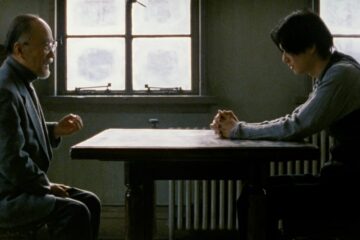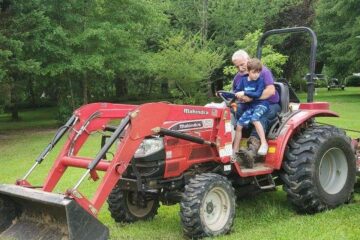During the spring of my freshman year of high school I competed on the track team in the long jump and triple jump. I joined because I was always a decent jumper, and I thought that those events wouldn’t involve much running. I discovered that they did. A lot. Especially in practice. I didn’t like running. I’m still not a fan.
Twice around the perimeter of the school was about a mile. I did what I could to keep up with the group. I was a much better jumper than runner.
I found that if I ran with my head down, it felt like I was going faster. And I would get yelled at by the coach. “Head up, Cooper!!” It seemed like I was making good progress. I’d raise my head for a few seconds then go back the way I was. “Head up!!” OK, running with my head up. It feels like I’m hardly moving. “That’s better!!” Hardly moving is better?
One afternoon the coach and I agreed to an experiment. I would run the first lap round the school the way I always did, and the second I would run with my head up. OK, fine, if it’ll get him off my back about it. Once around with my head down. Making good progress. Second time with my head up. Snail’s pace. At the end of the mile, the coach asked what I thought my times were. Obviously, I was convinced that my first lap was faster. It certainly felt faster. I looked at the numbers. I was stunned to discover that the opposite was true. Even though I had a lap behind me, the second lap was faster. Considerably faster. I didn’t understand why until much later.
Running with your head down feels faster because your view is always changing. A point on the road moves from the top of your field of vision to the bottom quickly, giving the illusion of speed. Furthermore, and perhaps paradoxically, as time goes on you feel like you’re accelerating when you’re actually slowing. Running that way is also poor mechanics. Your shoulders hunch over, your knees drag, and your stride length decreases. You end up working harder than necessary and using more energy.
Running with your head up reverses all of that bad posture. You’re running more efficiently even though the view barely changes and you feel like you’re standing still. The perception runs counter to reality.
With projects … and with life … it’s often easy in the midst of busyness to feel like you’re making more progress than you really are. And you don’t know it. The rush of day-to-day activities and checking items off the To Do list rapidly change the view, giving the illusion of speed. It feels good. It’s easy to get caught up. And it’s easy to one day notice that years have gone by and the sum of all these parts isn’t the whole you expected.
The point isn’t about making life go faster. It’s speeding by fast enough already. But rather about being present in the moment and keeping sight of the big picture. About understanding how each part contributes to the whole. About intentionally choosing the day-to-day activities that take you closer to your goal.
About keeping your head up.
Although my mile times improved significantly, I only competed that one season. And while I didn’t appreciate it at the time, that little experiment provided a valuable lesson that went far beyond track. One that I’ve carried with me ever since.
The track coach died about a year ago, before I could share this story with him. He was not my favorite teacher, and I’m certain I was not among his favorite students. But I would want him to know that even in this one event that teacher had a greater impact this student than he ever knew.

